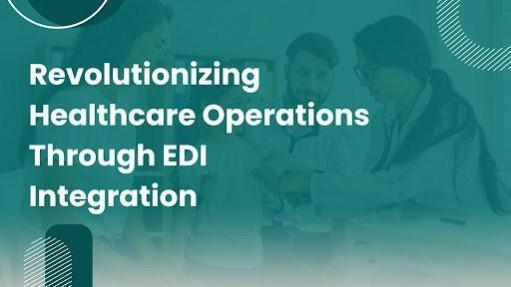
In the modern era, the rapid evolution of healthcare technology has led organizations to implement advanced data exchange mechanisms for greater efficiency and security. Among these innovations, Electronic Data Interchange (EDI) has become a pivotal tool, streamlining medical transactions, optimizing operational workflows, and enhancing patient care. Pramod Kumar Muthyala, an expert in healthcare technology solutions, examines how EDI is transforming healthcare systems by ensuring accuracy, reducing administrative burdens, and fostering seamless communication among stakeholders.
The Role of EDI in Modern Healthcare
Electronic Data Interchange (EDI) is crucial in modernizing healthcare transactions by replacing paper-based processes with secure electronic communication. This shift reduces manual errors, ensures regulatory compliance, and streamlines administrative tasks. Standardizing data formats allows seamless interaction between healthcare providers, insurers, and stakeholders, improving both accuracy and transaction speed. By enhancing efficiency and security, EDI strengthens healthcare data management, promoting faster processing times and reducing operational complexities in medical transactions.
Enhancing Operational Efficiency Through Automation
EDI automation in healthcare reduces administrative burdens and operational costs. Automated claims processing cuts reimbursement delays by over 80%, ensuring quicker payments for providers. Additionally, automated eligibility verification removes manual checks, minimizing errors and enhancing patient service. This streamlined approach improves efficiency, accuracy, and overall healthcare transaction management, benefiting both providers and patients alike.
Overcoming Security and Compliance Challenges
Security remains a crucial aspect of healthcare data exchanges. Implementing advanced encryption protocols and multi-layered security frameworks has enhanced EDI's defense against cyber threats. Regular security audits and staff training have proven effective, leading to a 92% decrease in unauthorized access attempts. These proactive measures reinforce data protection, ensuring compliance and safeguarding sensitive healthcare information from potential breaches and vulnerabilities.
Cloud-Based EDI: A Future-Proof Solution
Cloud-based EDI solutions have transformed healthcare data management by enhancing scalability, cost-efficiency, and accessibility. These implementations require 64% fewer technical resources and cut operational costs by nearly 70% compared to on-premise systems. Additionally, they enable real-time access to medical records, empowering healthcare providers to make faster, informed decisions and improve overall patient care efficiency.
Best Practices for Smaller Healthcare Organizations
Smaller healthcare providers benefit from a structured approach to EDI implementation. Starting with basic transaction automation before advancing to complex integrations reduces processing errors by 76%. Using managed EDI services instead of in-house development lowers operational costs by 67%. This strategic approach enhances efficiency, minimizes errors, and optimizes resource allocation for better healthcare data management.
The Role of Standardized Protocols in Seamless Integration
Standardized protocols like ANSI ASC X12 are essential for ensuring compatibility across healthcare systems. These protocols streamline medical transaction processing, cutting document handling time by 73%. Additionally, functional acknowledgment mechanisms enhance data transmission accuracy to 99.9%, strengthening the reliability of EDI transactions. This standardization fosters seamless communication, reduces errors, and improves efficiency in healthcare data management.
The Road Ahead: AI and Mobile Integration in EDI
The future of EDI in healthcare lies in the integration of artificial intelligence (AI) and mobile-enabled solutions. AI-powered EDI frameworks enhance anomaly detection, reducing manual verification efforts by 82%. Meanwhile, mobile integration has improved real-time accessibility to healthcare data, with mobile-based EDI transactions achieving a 93% increase in efficiency. As these technologies advance, they promise to redefine the landscape of healthcare data management.
In conclusion, EDI implementation has transformed healthcare operations by improving data accuracy, security, and efficiency. As organizations increasingly adopt cloud-based and AI-driven EDI solutions, the future of healthcare data exchange appears highly promising. Pramod Kumar Muthyala's insights into the evolving EDI landscape underscore its critical role in fostering a more streamlined and secure healthcare system. The continuous advancements in EDI technology will further enhance operational efficiency and drive better patient care outcomes.

















